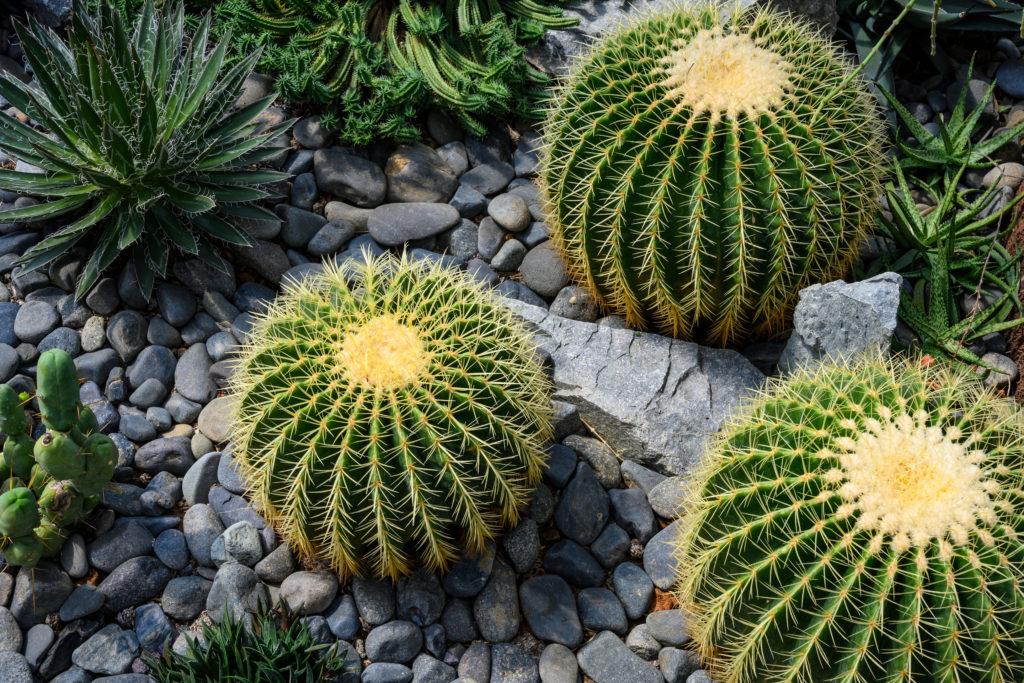Is cactus easy to grow? This is a question that many gardeners have, as cacti are such unique and interesting plants.
Cactus plants are not only easy to grow but come in many shapes, forms, colors, and sizes. They can be grown in any sunny area and require minimal watering and minimal maintenance. They are fantastic houseplants, with many different varieties to choose from!
Of course, each individual cactus will have its own unique requirements in terms of soil drainage, water, and other needs. Keep reading to learn more about how you can grow cactus easily at home!
Is cactus easy to grow?

Cacti are not only easy to grow but also can be found in just about any shape, form, color, or size. They can be grown in practically any sunny, well-draining area – even indoors! – and require minimal maintenance. This makes them the perfect houseplant for just about anyone.
The cactus family, Cactaceae, is one of the most distinctive and diversified plant families in the world. There are more than 2,000 species in this family and all of them are succulent and perennial.
Most cacti are drought-tolerant and don’t require a lot of water. This makes them ideal for the gardener who consistently forgets (or doesn’t have time) to water his plants. Again, though, well-draining soil is essential, as these plants don’t like sitting around with wet feet!
Is cactus good for beginners?

Cactus plants are good for beginners but there are some that are easier to tend to than others.
As a “green” gardener (pun intended!), you should look for a plant that is hardy and can adapt to different environments and water types.
Easy-to-care for houseplants should be able to tolerate a variety of light conditions – but analyze the light in your space before you buy a cactus. Most prefer full, bright sunlight, but there are others that prefer the light to be less direct.
Cactus plants tend to be good for beginners because they are succulents, meaning they have thick, fleshy leaves that allow them to hold water for long periods of time. They can withstand large amounts of abuse and neglect – though, of course, they’ll perform much better if you are diligent about watering, fertilizing, and providing the proper amount of sunlight.
How quickly do cacti grow?

The trade-off in growing cactus is that, though they are hardy and easy to grow, they don’t grow all that fast.
Even when provided with the optimal conditions, cactus plants are still slow growers. Typically, a plant will only grow to about the size of a marble within the course of six months to a year. After two to three years, the vast majority of cactus species will only be a few centimeters in height.
And for each year moving forward, don’t expect your cactus to light the world on fire. It will continue to put on a modest centimeter or two in height each year.
The benefit of this is that you won’t have to repot or transplant a cactus very often – it should stay perfectly content in the pot that it’s in. The downside, of course, is that you may wonder whether your cactus is growing at all! Provide it with the proper care, though, and you’ll be rewarded with a plant that is beautiful – albeit a bit slow growing.
What is the easiest cactus to grow outdoors?

Not all cactus can be grown outdoors, especially if you live in a relatively unforgiving cold environment.
Choosing the best cactus depends largely on the climate you live in and what kind of soil you have. If you live in a climate that gets harsh winters, make sure you check the USDA Plant Hardiness Zone range of the cactus species you’ve selected. If it isn’t listed as being winter hardy, you may want to grow it indoors instead.
Otherwise, here are some cactus species that tend to do well outdoors:
Beavertail Cactus

The beavertail cactus is a low-spreading cactus with pads that are wide and flat – just like a beaver’s tail!
A good choice for desert landscaping, it requires minimal water and only needs to be irrigated about once every two to three weeks in the summer (even less in the winter).
Turk’s Cap

Native to the Caribbean, this cactus loves sunshine and temperature above 70 degrees.
Again, not the best choice for a colder climate.
Star Cactus

Also known as monkshood, this cactus is also low-maintenance and native to Texas and Mexico. It is one of the most cold-hardy types of cactus out there.
There are many sub-species of this plant you can grow, with some tolerating temperatures as low as what you’ll find in zone 5.
Prickly Pear Cactus

Last but not least is the prickly pear cactus, a classic choice if you’re looking for a hardy garden cactus.
You can actually harvest and eat the fruits of this cactus, which grows best in zones 9-11.
Best Indoor Cactus for Beginners

While you might be limited on the types of cactus plants you can grow outdoors, due to your climate or other restrictions, there are many different kinds of indoor cactus species you can grow – your options are virtually endless.
Here are some great choices:
- Orchid cactus
- Saguaro cactus
- Old lady cactus
- Hedge cactus
- Angel wings cactus
- Bishop’s cap
- Easter cactus
Final thoughts
Cactus plants are some of the hardiest and easiest to keep alive – that is, as long as you provide them with ample sunlight and well-draining soil. Choose one of the cactus species listed above and you’ll increase your chances of success.
If you’re curious about adding cacti to your garden, or if you’ve been struggling to keep them alive, try following these tips. With a little bit of care and some basic knowledge, you should be able to grow healthy cactus plants that will add interest and color to your landscape – without a lot of hard work on your behalf!



